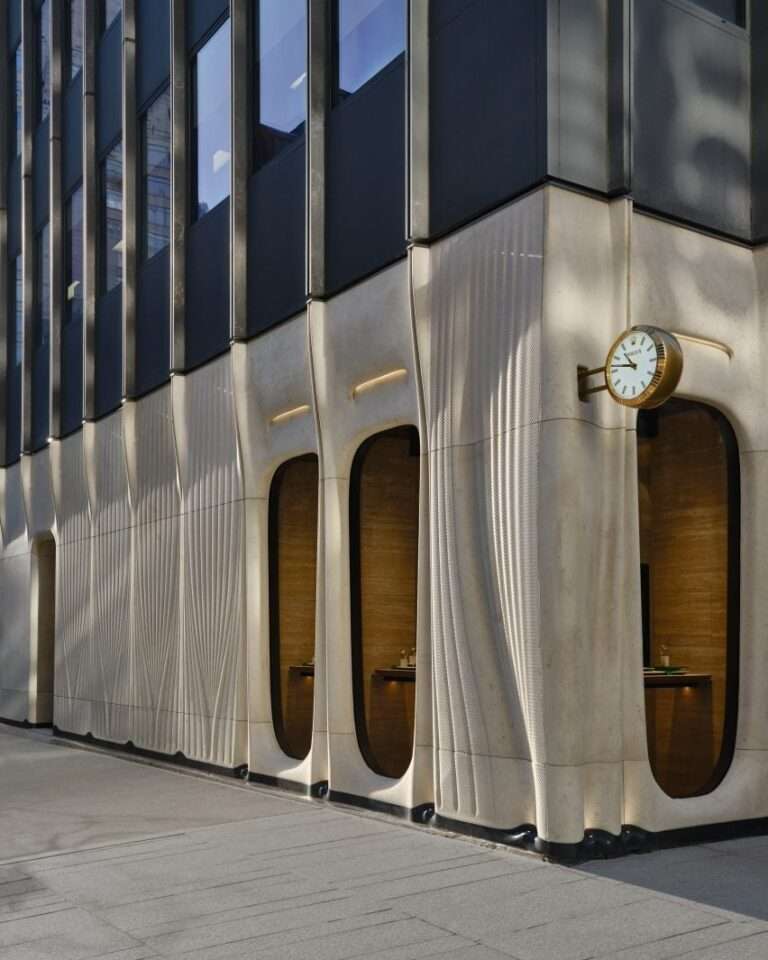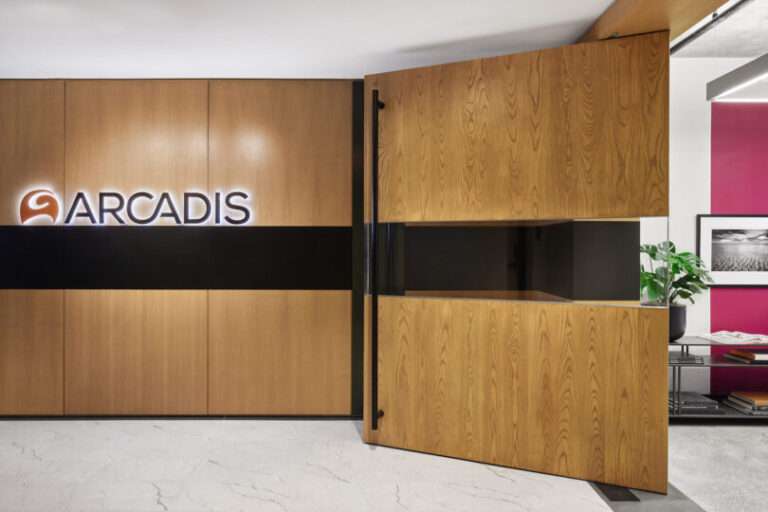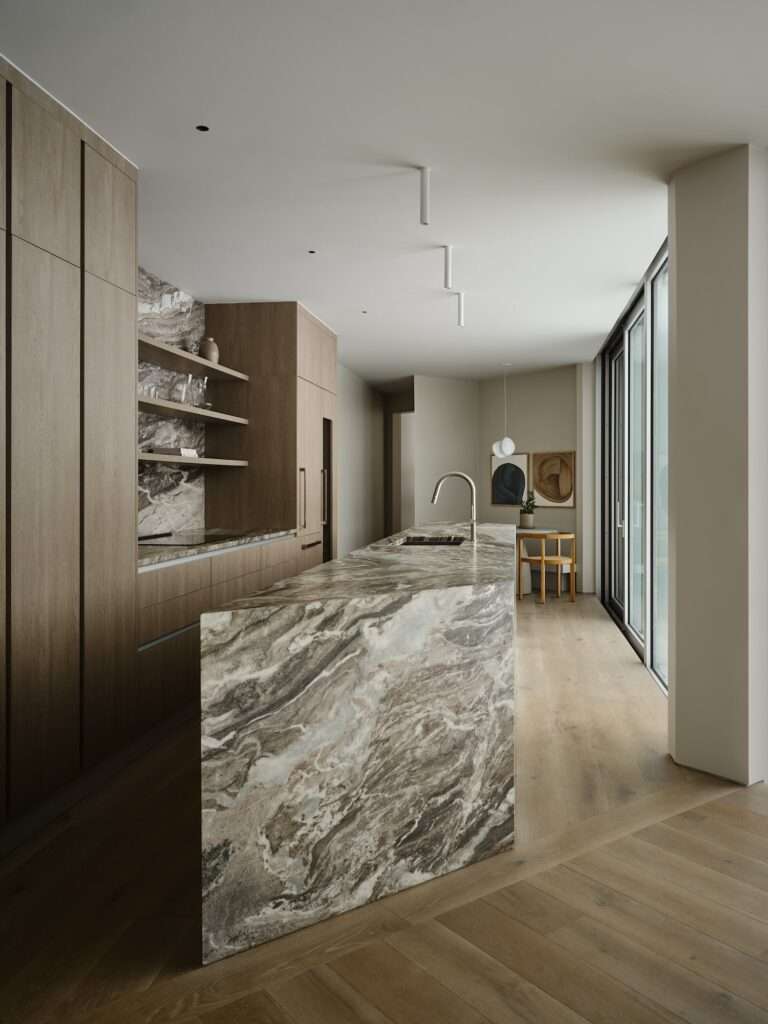Nothing Unwanted Redefines Waste in Architectural Design
Nothing Unwanted is a home prototype built almost entirely out of waste by MIT graduate Yiqing WANG. Waste perpetuates its existence, accumulating silently whether hidden or recycled. From the depths of the basement to the refined environs of the MIT Media Lab lounge, diverse forms of refuse undergo a transformation process. Amidst the global glut of waste, the circular economy remains an elusive ideal, especially when global waste transportation grinds to a halt. Reevaluating our waste management systems becomes imperative, prompting a quest for tangible on-site upcycling solutions. In a world teetering between post-war scarcity and consumerist abundance, architecture grapples with its role in engaging with reclaimed materials, environmental pollutants, and climate change. The design of waste often symbolizes a rift between society and its refuse, marked by efforts to remove, reshape, and re-standardize. While zero-waste systems and circular economies aspire to noble ends, they can inadvertently spawn hidden waste, labor, and carbon footprints, perpetuating environmental injustices.
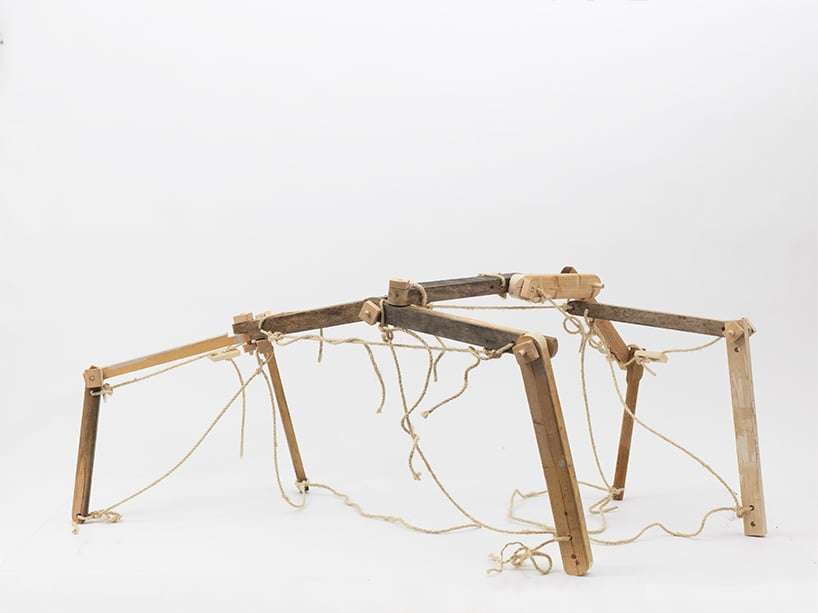
the roof frames are made of reclaimed wood, rope, and dowels | all images by Yiqing WANG unless stated otherwise
WANG’s Systematic Approach Repurposes Institutional Waste
Faced with escalating labor costs and diminishing recycling facilities, institutions grapple with the challenge of waste management. The sheer volume of waste generated by educational institutions underscores the urgency of rethinking our approach. The project by Yiqing WANG unfolds over six months, categorized into three waste types: household waste, workplace materials, and construction and demolition debris. Locally sourced waste materials, from e-waste to wood and metal, are repurposed into building components and rooms. Digital tools, from 3D scanning to computational design, facilitate the transformation of waste materials into architectural elements. By calibrating waste based on dimensions, density, and shape, the project sidesteps the need for heavy machinery and resizing. The resulting structure, foldable and adaptable, epitomizes a harmonious blend of technological precision and manual intervention. It represents an iterative process that balances the diverse characteristics of waste materials with the need for standardized features.
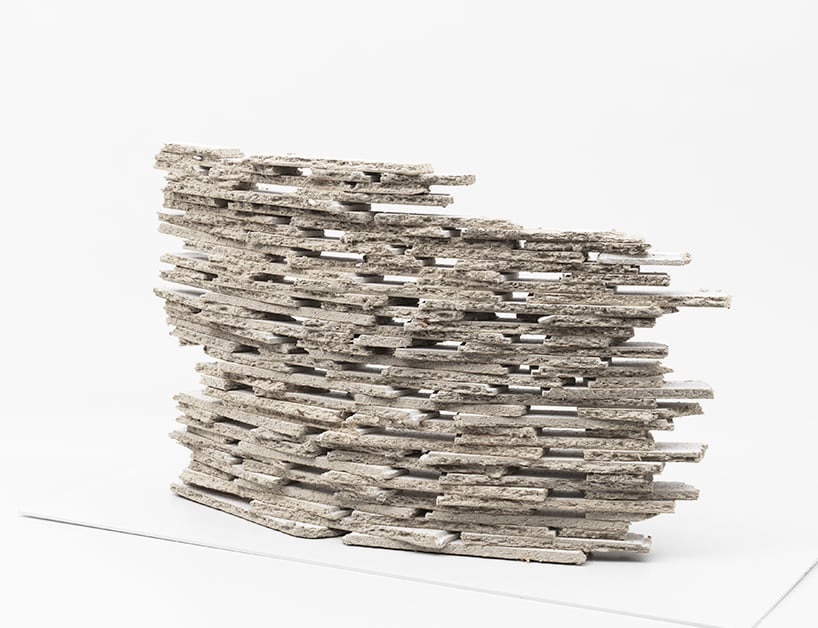
the envelope prototype is made of discarded ceiling boards collected from a renovation site on campus
the project promotes Ethical Design and Material Consciousness
While the prototype incurs minimal raw material costs, it serves as a conceptual exploration rather than a universal model for architectural practice. It calls for a paradigm shift in how we conceive and engage with materials, urging designers and consumers to acknowledge their environmental and social impact. The fusion of digital technologies with manual craftsmanship bridges the gap between the unpredictability of waste materials and the precision of digital tools. This marriage of technology and tradition heralds a more conscientious approach to design, one that respects our intricate relationship with the material world and its ethical ramifications. Through the integration of local waste into a broader material reuse system, the project redefines perceptions of waste, aiming to blur boundaries between domestic space and refuse. Ultimately, it envisions a scalable and operable system to reclaim discarded matter and memory.

the assembly process was completed in 55 minutes in the studio
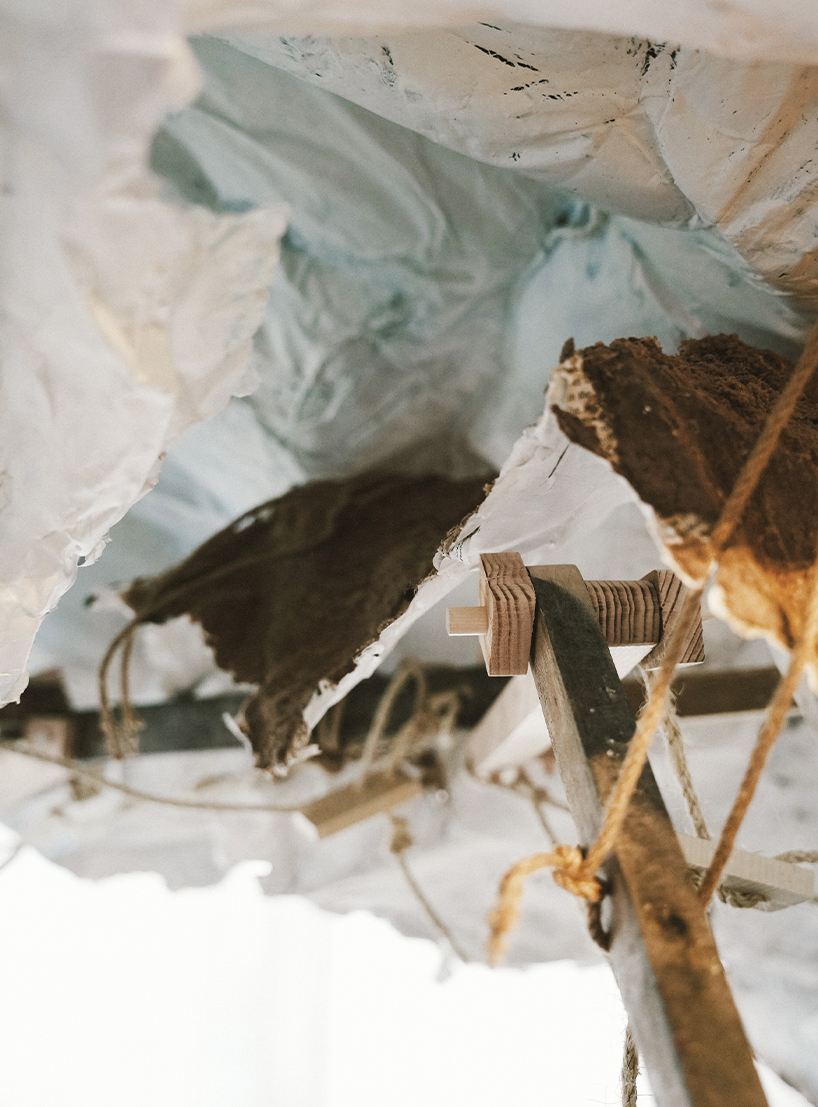
the joints and the tensioning ropes become connecting points of the roof structure
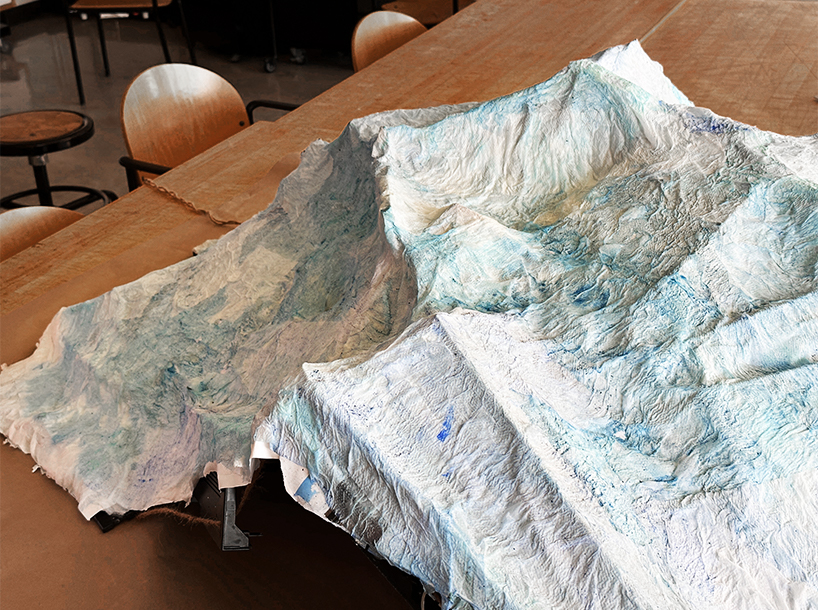
paper mache on top of the plastic sheets formwork
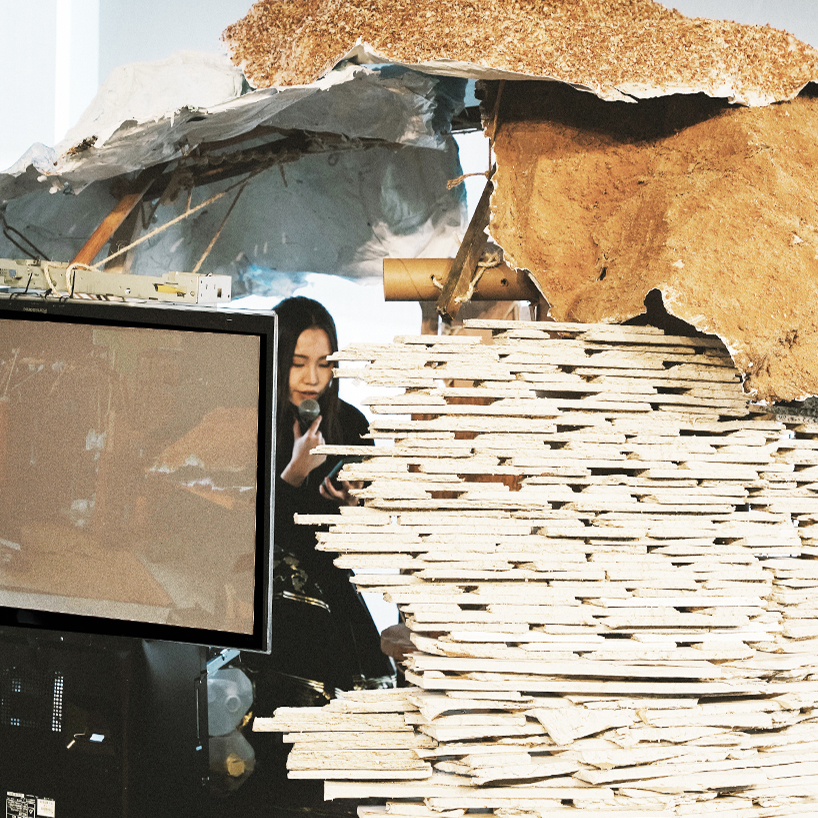
designer Yiqing WANG’s presentation in the Hut | image by Rose Bao
